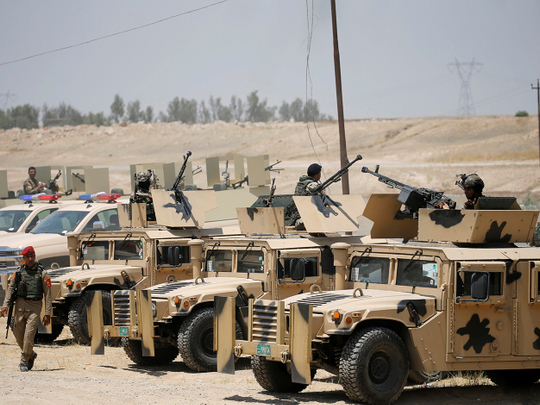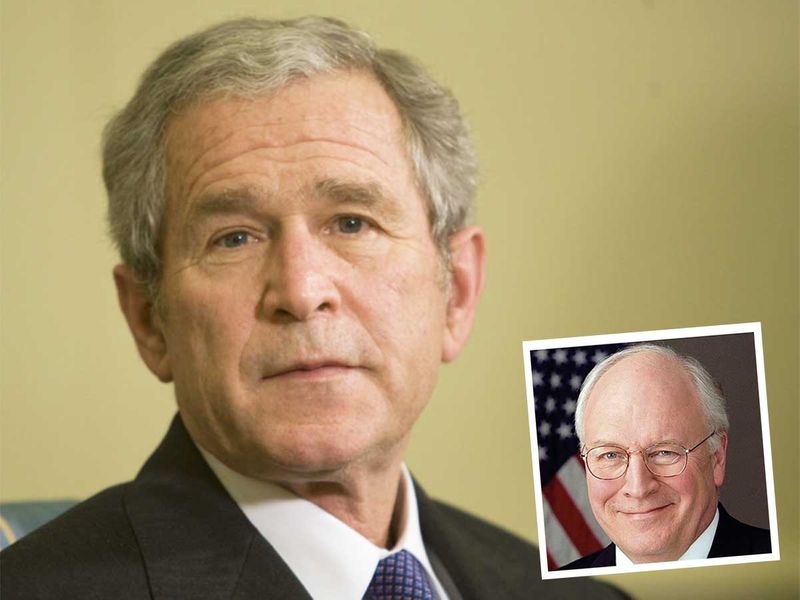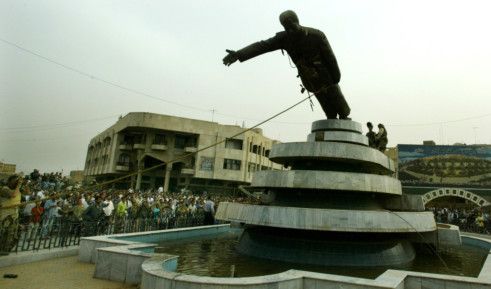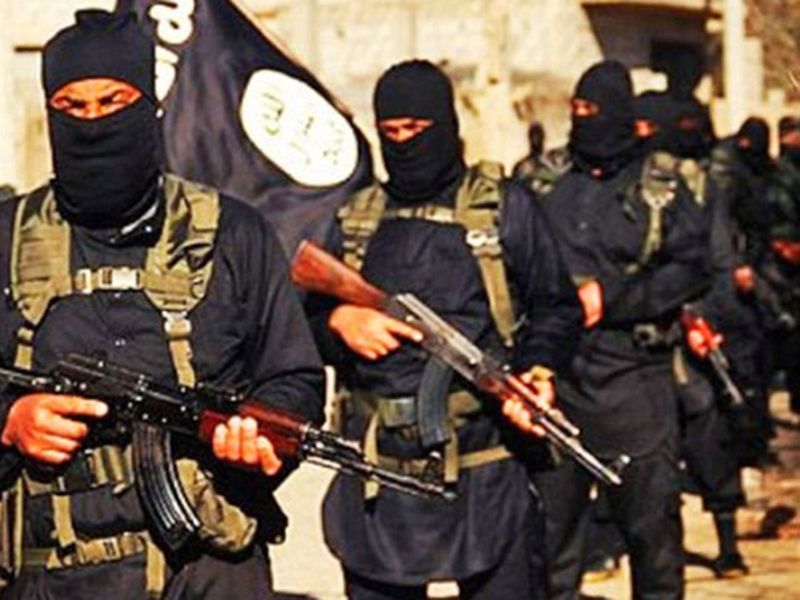
“They will commit suicide at the gates of Baghdad” barked Iraqi Information Minister Mohammad Sa’id El Sahhaf, days before the US invasion of his country started on March 20, 2003. He was referring to US troops planning to occupy his country at the orders of then-president George W. Bush.
That conflict — coined the Second Gulf War — is exactly twenty years old now. Although active combat operations would carry on for the next decade, the war’s high drama concluded with the fleeing of Saddam Hussein and the toppling of his 12-meter statue in Firdoss Square on April 9, 2003.
It had been erected the year before on the occasion of Saddam’s 65th birthday. Its crash marked the end of an era: for Iraq, the US, and the world at large.
Flimsy claims
President Bush had begun giving serious consideration to invading Iraq shortly after 9/11. In his January 2002 State of the Union address, he famously coined Iraq a member of the “Axis of Evil.”
Next September, he formally called on the international community to support his upcoming war, based on claims that among other things, Saddam was hosting Al Qaida, threatening the US, destabilising the region, and developing Weapons of Mass Destruction (WMDs).
A report from the Joint Chiefs of Staff later that month challenged those claim, saying: “Our knowledge of the Iraqi nuclear weapons program is based largely — perhaps 90% — on analysis of imprecise intelligence.”

UNSCR 1441 authorised a new round of joint weapons inspections by the UN’s arms monitoring branch and the IAEA, making the main inspectors, Hans Blix and Mohammad Elbaradai, household names in the Arab World. Both found no evidence that Saddam was developing nuclear weapons or threatening world peace.
Then came US Secretary of State Collin Powell’s February 2003 presentation at the UN, where he erroneously claimed that Saddam was hiding unconventional weapons based on flimsy intelligence gathered from Iraqis in the Diaspora.
Large anti-war demonstrations broke out in almost every capital across the world and the UN refused to cover-up for the invasion, insisting that it was legally unjustified.
George W. Bush went ahead regardless, with the full support of allies like Great Britain, Australia, and Poland.
The rest of course, is now history. No traces of WMDs were found. Saddam went into hiding before he was captured and executed. So were his two sons Uday and Qusay.
Iraq collapsed into uncontrollable chaos with a sharp peek in violence in 2005-2005. That violence snowballed into a sectarian war warfare.

Sectarian war and revenge
Death squads began roaming the streets of Baghdad, abducting and assassinating people. Some were given mock trials. Others were shot at close range.
That came hand-in-hand with the US-led systematic process of de-Baathification, which outlawed Saddam’s party and arrested anyone trying to revive it. Baath Party founder Michel Aflaq’s grave was bulldozed and his Baghdad home, torn down by the Americans.
Saddam himself was caught in a miserable condition, and after a mock trial broadcasted live on television, was sent to the gallows. His top generals were also arrested, tried, and executed.
Some of them managed to escape, led by former vice-president Izzat Al Douri. They took off their military attire, forming the nucleus of what would later be known as Daesh. By 2014, they managed to overrun important cities like Mosul and Saddam’s hometown of Tikrit, creating a self-proclaimed caliphate.

Outcomes
Looking back twenty years later, one might ask what the Iraq War actually achieved for Iraq? Stability is still absent, and so is economic prosperity.
Some would automatically mention “democracy” as a product of the Iraq War although that too is questionable.
Iraq’s democracy was put into question last June — along with the US’s entire legacy — when members of Moqtada Al Sadr’s movement stormed premises of the Iraqi Parliament in the Green Zone, staging a sit-in that captured world headlines.
They were trying to prevent their Shiite rivals in the Coordination Framework from naming a new prime minister while quarrelling with them on who actually controlled the lion’s share of parliamentary seats after the October 2021 elections.
The Sadrists transformed parliament into a circus, greatly belittling Iraq’s Chamber of Deputies, one of the symbols of post-Saddam “democracy.”
Another setback of the Iraq War was brunt faced by the country’s Sunni community, which has never managed to reassert its influence in the post-Saddam order. Iraq’s 2005 constitution transferred powers from the presidency to the premiership, which has since been reserved for a Shiite.
Over the past twenty-years, certain Sunni figures would rise to prominence in different governments, only to be sidelined either because of their weakness, or inability to stand up to Shiite majority, despite being inserted into high profile, yet ceremonial jobs. The list includes Tarek Al Hashemi (vice-president in 2006-2012) and Saleh Al Mutlaq (deputy premier in 2010-2015), among others.
As we mark the 20th anniversary of the Second Gulf War, it is clear that the conflict has left a lasting impact on Iraq and the wider world. The flimsy claims used to justify the invasion, and the lack of stability and economic prosperity in Iraq today is a testament to the failure of the war’s intended goals.
— Sami Moubayed is a historian and former Carnegie scholar. He is also author of Under the Black Flag: At the frontier of the New Jihad.








